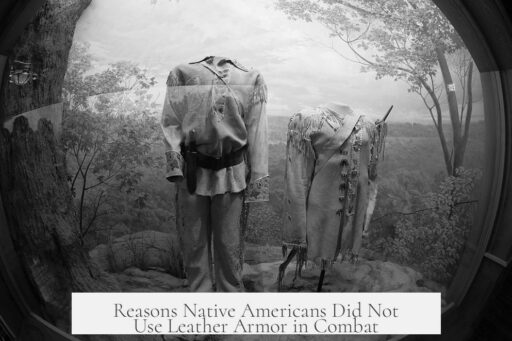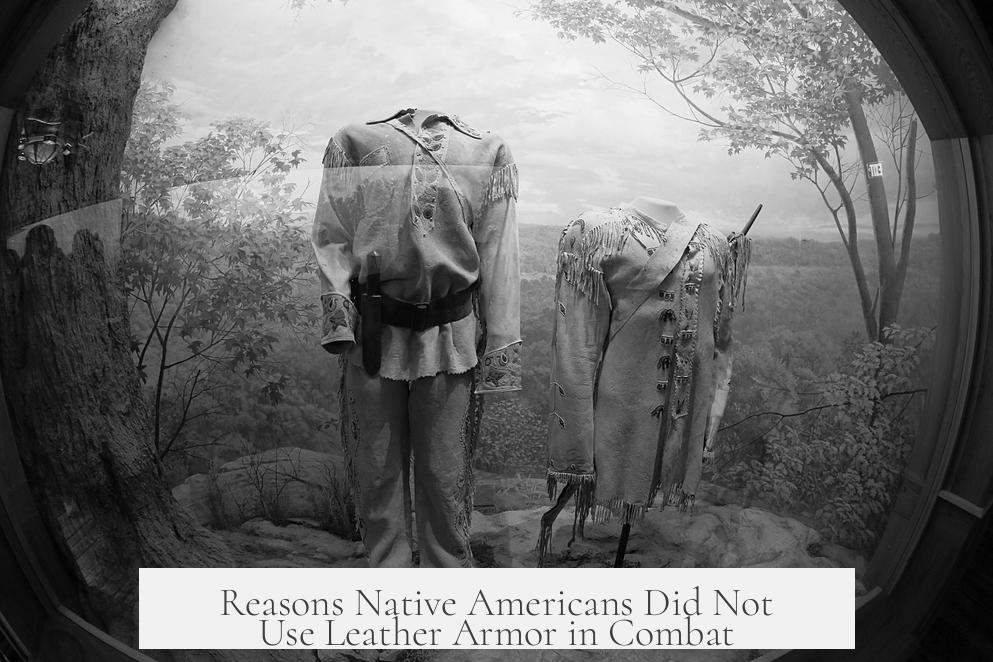Native Americans extensively used leather armor, often enhancing its protective qualities through boiling, layering, and incorporating sand. Their armor was diverse, relying on materials beyond simple leather to adapt to their environments and combat needs.
The idea that Native Americans did not wear leather armor is a misconception. Many groups developed complex armor systems from leather and rawhide. They hardened hides by boiling or glue treatments and layered multiple pieces for strong protection. Examples include Tlingit armor, which combined glue-hardened hide layers, and reported Blackfoot quilted leather coats.
Leather came from various large mammals, with bison and moose hides prized for toughness. Headgear was also often leather-based, with helmets from Nez Perce elkhide to Apache rawhide decorated with trade silver. Some groups made scale armor from glued and sanded rawhide discs.
The armor styles varied greatly across North America. Apart from leather, materials included wood, bone, antler, textiles (padded cotton and wool), and even metal in some cultures. These choices reflected local resources and combat styles.
Textile armor like the Aztec ichcahuipilli cotton armor was highly effective. It even outperformed some European metal armors during the Conquistador encounters. Meanwhile, wooden armor protected Alaskan warriors from 18th-century weapons.
Leather armor sometimes featured sand to increase arrow resistance. Missionary Adrien-Gabriel Morice and explorers like Lewis and Clark recorded armor made by soaking hides in glue and sand. This rendered the leather nearly arrowproof. A fur trader’s 1773 account described a 6-layered Blackfoot leather coat that resisted penetration.
| Type | Material | Function | Notable Example |
|---|---|---|---|
| Glue-hardened leather | Rawhide with glue layers | Increased rigidity and needle resistance | Tlingit hide jerkins |
| Quilted Leather Shirt | Multiple leather plies sewn together | Flexible and strong torso protection | Blackfoot, Navajo war shirts |
| Scale Armor | Glued rawhide discs, sand-reinforced | Arrow and spear defense | Apache “Iron Jacket” variant |
| Textile Armor | Padded cotton | Lightweight bullet and arrow resistance | Aztec Ichcahuipilli |
| Wood/Bone Armor | Wood, antler, bone plates | Heavy impact protection | Alaskan wooden armor |
Leather helmets and horse armor were common and often richly decorated. Buffalo bonnets provided both function and symbolism. Nez Perce elkhide helmets and Apache hide helmets offered head protection well into the 19th century. Horse armor appears in Great Plains rock art and archaeological finds, suggesting widespread protection of mounts in battles and raids.
The arrival of firearms reduced the role of traditional armor, as ballistic weapons nullified earlier protections. Many armor styles transitioned to ceremonial use or fell out of frequent use. However, before this, a broad spectrum of armor technologies flourished.
Documented evidence from explorers, missionaries, and ethnographers provides solid accounts. Captain Cook remarked on the penetration resistance of Nootka leather armor. Gabriel Franchere described impenetrable elk skin armor on the Columbia River. Lewis and Clark noted sand-glued antelope skin armor impervious to arrows.
The diversity of armor reflects the vast cultural and environmental differences among Native American groups. Leather was a significant component but existed alongside other materials. This adaptability defies simplistic myths of unarmored Native warriors and highlights their technological ingenuity.
- Leather armor was widespread and sophisticated, not absent.
- Techniques like boiling, glue hardening, and layering increased protection.
- Armor materials varied by region and available resources.
- Textile and wooden armor also played important roles.
- Firearms reduced traditional armor’s battlefield relevance.
- Firsthand historical records confirm Native American leather armor usage.
Did Native Americans actually use leather armor?
Yes, many Native American groups used leather armor. They layered, boiled, glued, and reinforced it with sand to improve protection. Leather was a common material due to its availability and durability.
Why didn’t Native Americans rely solely on leather armor?
Native armor was diverse. Groups combined leather with textiles, wood, bone, and antler. These materials served different needs and environments. Leather alone was often supplemented for better defense.
How did Native Americans strengthen their leather armor?
They boiled hides, glued multiple layers, and applied sand to stiffen the material. Some armors had up to eight layers. These methods made the armor tough enough to stop arrows and spears.
Were there different types of leather armor beyond clothing?
Yes. Besides shirts and coats, there were leather helmets and horse armor. Helmets often had extra features like trade silver or animal horns. Horses also wore protective rawhide coverings in battle.
What caused the decline in Native American leather armor use?
The rise of firearms reduced armor effectiveness. After guns became common, armor use shifted toward ceremonial roles. Practical battlefield use of leather armor declined in many groups.




